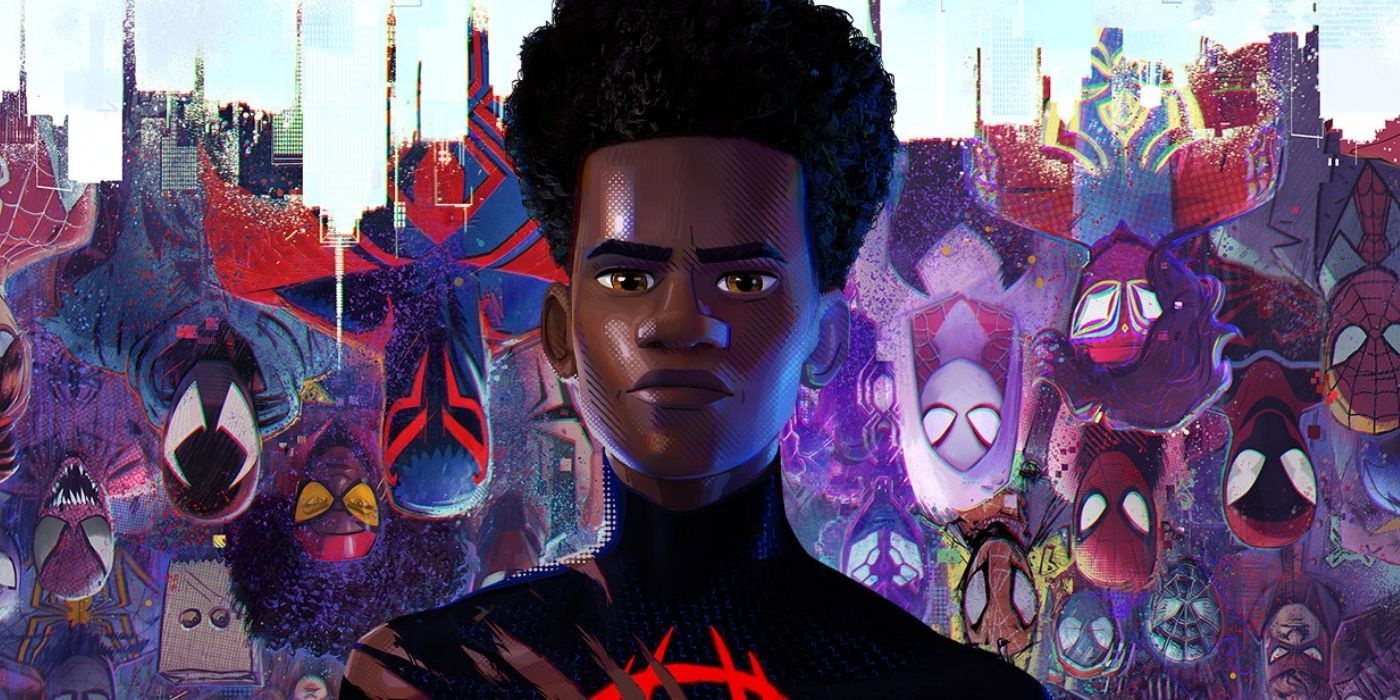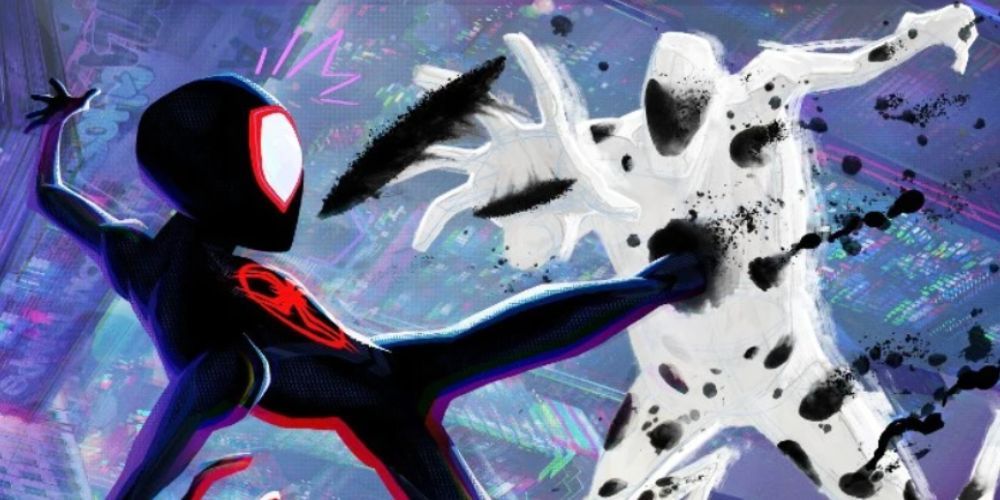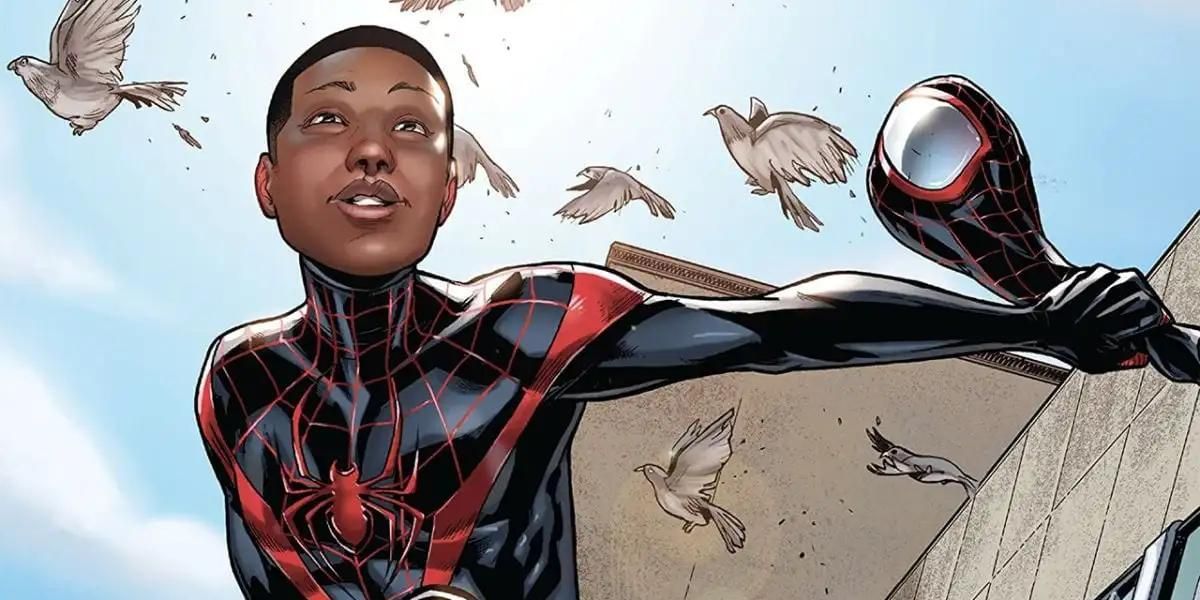With Spider-Man: No Way Home, the appearances of Spider-Men past and present caused a stir over which actor brought the most faithful and all-around best interpretation of the web-slinger to the screen: Tobey Maguire, Andrew Garfield, or Tom Holland. Each actor that has taken on the “great responsibility” of playing Peter Parker did so in their own unique way to varying levels of success, between Maguire’s down-to-earth charm, Garfield’s melancholy angst, and Holland’s optimistic naïveté. When it comes to playing the spectacularly amazing Spider-Man himself, however, none of these actors have been able to embody the character’s true style of heroics on the big screen. While the gravity-defying courage that made Spider-Man a comic idol has been limited by the confines of practicality in live-action filmmaking, the realm of animation has yielded the web-head his best venue to demonstrate the kind of kinetic dynamism and even long-form storytelling worthy of the character.
Across Spider-Man's career in nearly 60 years of comic history, he and a veritable universe of alternate spider-heroes have demonstrated abilities and athleticism that cannot be accomplished by any living human actor without the extensive aid of visual effects wizardry. Even though Maguire, Garfield, and Holland each performed stunt work in the iconic red-and-blue suit, their high-flying acrobatics and superhuman parkour in the costume were substantially aided by digital CGI effects to the point that they all were almost entirely computer-rendered puppets.
Animation Is Playing to Spider-Man's Strengths
If Spider-Man in each of his live-action film appearances has largely been an animated visual effect anyway, films like Spider-Man: Into the Spider-Verse and Spider-Man: Across the Spider-Verse entirely immerse his abilities in the animated medium to its utmost potential. As art forms, the still panels of the comic book page and the elastic plausibility of animation share the same invitation to suspend one’s disbelief of what is possible for a character with Spider-Man's skillset to accomplish. Instead of adhering the way he moves to the perimeters of live-action realism and what is humanly possible, animation allows for Spider-Man's superhuman physicality to be translated into a visual language that can fully illustrate what someone who “does whatever a spider can” is capable of.
Into the Spider-Verse’s depiction of web-swinging and kinetic combat is unlike anything the screen has seen before with the character. Scenes like Miles Morales (Shameik Moore) taking his new web shooters for an inaugural swing around the city or the narrow woodland escape from Doc Ock (Kathryn Hahn) portray web-slinging with a sweeping momentum and speed that take full advantage of the fluidity of the animation to make the swinging more thrillingly effortless than ever before. These scenes also incorporate Spider-Man's physical strength in more varied ways than the live-action films, prominently utilizing acrobatic prowess and powerful feats of strength on a practical moment-to-moment, frame-by-frame basis.
Expressively exaggerated performance poses are a staple of great animation and allow Spider-Man to strike more iconic spider stances and dish out harder and faster hits when fighting villains as an animated character. Even the first look at Across the Spider-Verse alone featured a mad-dash brawl between Miles and the previously teased Spider-Man 2099 (Oscar Isaac) that incorporated insanely powerful comic-style posing and action unlike anything seen in the live-action films. Facial expressions are also a huge factor of effective animation and being able to convey a wide range of emotion through just the eyes of the Spider-Man mask alone brings the likability of the comic drawings to life in animation even further than the static mask on a live actor could.
Animation Is More Like the Comics Anyways
Spider-Man is also a form-fit for serialized animated series like the 90's Fox Kids cartoon and 2008's The Spectacular Spider-Man, translating the long-form pulp drama and iconic arcs of the comics to the screen over multiple seasons more even than a trilogy of live-action films could. Each episode plays out and ends like a comic book issue and takes the viewer along for the long haul of Peter’s struggles as they pile up, allowing the series to follow the daily grind of being Spider-Man. Storylines like the Venom symbiote saga are able to be played out over an entire season to effectively engross the audience in the drama of the black suit’s effects on Peter episode to episode.
As a character, Spider-Man is not just about the spectacle of his heroics, but animation allows him to live up to the spectacular potential of his powers, thereby enhancing his screen presence, pushing the storytelling possibilities, and making him truly amazing. Much like Edgar Rice Burroughs’ immortal jungle legend Tarzan, Spider-Man's gymnastic superhuman abilities cannot be fully put into practice by any living actor without extensive movie magic, but like in Disney’s Tarzan, titles such as Spider-Verse have been able to bring the Marvel hero to the screen as he was envisioned over a history of comics through fast-paced and even groundbreaking animation.



